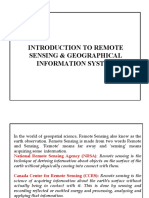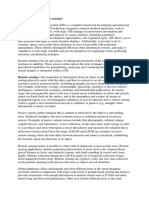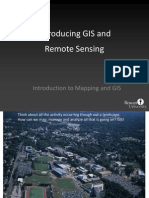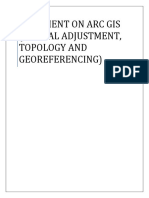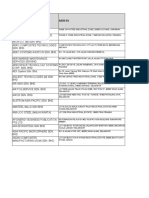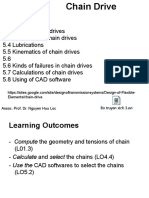0% found this document useful (0 votes)
35 views22 pagesModule 5
A Geographic Information System (GIS) is a framework for capturing and analyzing spatial data, utilized across various fields such as engineering and business. It comprises hardware, software, data, people, and methods, and operates through thematic layers that link geographic information for analysis. Remote sensing, a key component of GIS, involves acquiring information about the Earth from a distance, using both active and passive sensors for applications in resource exploration, environmental studies, and disaster management.
Uploaded by
PramukhBabuCopyright
© © All Rights Reserved
We take content rights seriously. If you suspect this is your content, claim it here.
Available Formats
Download as PPTX, PDF, TXT or read online on Scribd
0% found this document useful (0 votes)
35 views22 pagesModule 5
A Geographic Information System (GIS) is a framework for capturing and analyzing spatial data, utilized across various fields such as engineering and business. It comprises hardware, software, data, people, and methods, and operates through thematic layers that link geographic information for analysis. Remote sensing, a key component of GIS, involves acquiring information about the Earth from a distance, using both active and passive sensors for applications in resource exploration, environmental studies, and disaster management.
Uploaded by
PramukhBabuCopyright
© © All Rights Reserved
We take content rights seriously. If you suspect this is your content, claim it here.
Available Formats
Download as PPTX, PDF, TXT or read online on Scribd
/ 22












